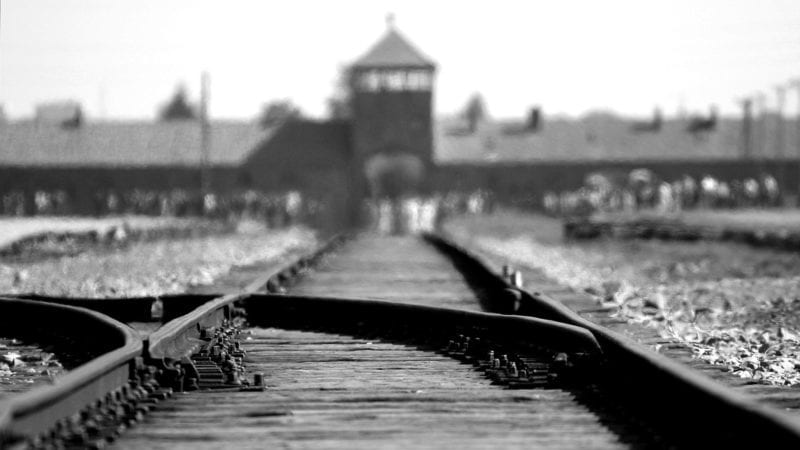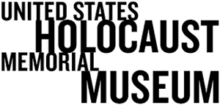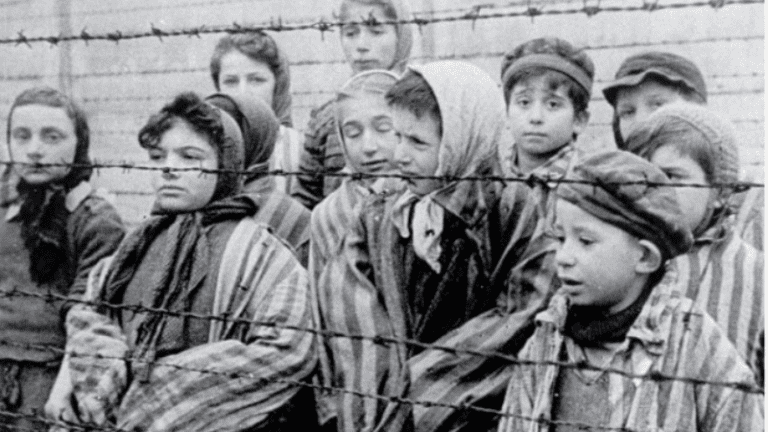Teaching teens about the Holocaust can be a complex and highly sensitive task, one that requires a well-planned and well-executed approach.
This horrific chapter in world history raises difficult questions about human behavior and the context within which individual decisions are made. One of the greatest challenges is how to help students understand this history without bombarding them with graphic images.
The United States Holocaust Memorial Museum has produced a powerful film, The Path to Nazi Genocide, that is not only an excellent resource for history teachers but can be used for engaging and thought-provoking cross-curricular lessons. Stream it online or get a free copy of the DVD here.
Here are seven ideas for connecting select portions of this film to companion resources in world history, language and composition, rhetoric, poetry, ESL, and African history.
1. Understanding Life in the Time of Hitler’s Rise to Power
View: The portion of the film “Building a National Community: 1933–1936”
Read: The Book Thief by Marcus Zusak
The novel The Book Thief tells the story of a family in Munich in the years leading to and including World War II. The narrator, Liesel, is separated from her mother, who can no longer afford to care for her after the disappearance of her “Communist” husband, Liesel’s father. When the novel opens, Liesel moves into her foster home, and she and her foster parents learn to navigate the complicated political climate in Munich at that time. The 1933–1936 section of The Path to Nazi Genocide gives important context to this novel, which helps students understand the gradual building of Hitler’s power and better understand the challenges facing the Hubermann family.
2. Examining Genocide
View: The portion of the film “From Citizens to Outcasts: 1933–1938”
Read: We Wish to Inform You That Tomorrow We Will Be Killed With Our Families by Philip Gourevitch
Gourevitch’s acclaimed examination of genocide in Rwanda is bolstered by comparison to the marginalization of Jews and others as shown in The Path to Nazi Genocide. The two texts describe genocides that differ significantly both in formation and aftermath. Guide students to look closely for evidence of early warning signs of genocide, such as targeting a particular group, or past group violence. Watch a short video produced by USHMM to learn more about early warning signs. Read this historical overview: What Is Genocide?
3. Understanding the Mind-Set of the Victims
View: The portions of the film “From Citizens to Outcasts: 1933–1938” and “World War II and the Holocaust:1939–1945”
Read: Night by Elie Wiesel
Wiesel’s widely taught memoir Night opens with the prognostication of the character Moishe the Beadle pleading with his fellow townsfolk to “listen to [him]” about the mistreatment he experienced when taken from his town by the Hungarian Police when all foreign Jews were expelled from Sighet. Students often struggle to understand the reluctance of Wiesel and his family to understand the severity of the threat to them. Viewing these two sections of the film aids in providing students with the historical background to better contextualize Wiesel’s work.
4. Examining Nazi Propaganda
View: The portion of the film “Aftermath of World War I and the Rise of Nazism, 1918–1933”
Read: Selections of Nazi propaganda
The Advanced Placement Language and Composition course requires the analysis of many types of nonfiction writing, with an emphasis on identifying speaker, message and audience. Propaganda serves as a particularly interesting option for students to consider, and the prologue and first three chapters of The Path to Nazi Genocide sets the cultural context for them to then examine World War II propaganda produced by the Nazis as well propaganda produced in the United States.
5. Using Film to Build Background Knowledge for ESL Learners
View: The entire film The Path to Nazi Genocide
Read: Maus by Art Spiegelman
Art Spiegelman’s graphic novel Maus has much to offer a class in English as a Second Language/English for Speakers of Other Languages. Given its graphic format, it presents a lower barrier of entry to students, yet the content is still rigorous and challenging. English-language learners’ background knowledge of the Holocaust can be quite varied. To prepare students for the graphic novel, The Path to Nazi Genocide can be used to provide some of the historical context.
6. Examining Minority Struggles in the US During WWII
View: The entire film The Path to Nazi Genocide
Read: Only What We Could Carry: The Japanese Internment Experience by Lawson Fusao Inada and articles from the USHMM website
The film The Path to Nazi Genocide serves as a compelling companion piece to selections from Inada’s Only What We Could Carry, which examines the discrimination against Japanese American citizens who were forcibly sent to internment camps. In addition, articles from the USHMM website explain the struggles of African American citizens against Jim Crow laws at home and the struggle to participate in the 1936 Olympic Games held in Nazi Germany. Students will understand that while there was worldwide criticism of Nazi treatment of Jews and others, the US also faced struggles of social inequality and persecution of minorities at home at the same time. Antisemitism in the United States caused problems for American Jews, which is described here.
7. Creating Poems Inspired by the Words of Holocaust Survivors
View: The portion of the film “World War II and the Holocaust: 1939–1945”
Read: USHMM’s page on Holocaust Poetry
After spending some time reading and discussing the poetry on the USHMM’s Holocaust Poetry page, students can view this portion of the film with particular attention paid to the first-person testimony by four survivors. Because this is such a complex and graphic history, students will benefit from the opportunity to express themselves after learning about this history. Students can choose one of the sentences spoken by survivors to use as an inspiration or anchor piece of an original poem of their own about genocide and the Holocaust.
Sign up to get a free copy of The Path to Nazi Genocide DVD here, or stream it now.


